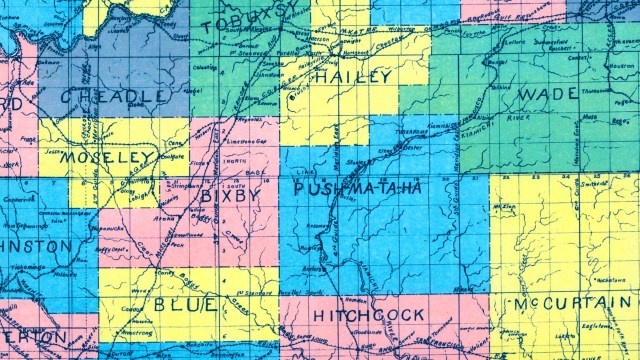151- Exclaves of West Berlin (4): Steinstücken and Wüste Mark
n
Steinstücken is the southernmost part of the Berlin Ortsteil (borough) of Wannsee, almost adjacent to the UFA film studios. From east to west, it’s no more than 500 metres wide, north to south: 300 metres. About 200 people call Steinstücken home. Before 1972, it was completely isolated inside the territory of Potsdam, the capital of the neigbouring Land (state) of Brandenburg. This sleepy hamlet was a focal point of East-West tension, as it was one of the exclaves of West Berlin inside East Germany.
n
(for earlier references to Berlin exclaves: see #99 on Erlengrund and Fichtewiese, #102 on Laßzinswiesen and #114 on the three Böttcherberg exclaves)
n
The Steinstücken exclave dates from 1787, when farmers from Stolpe acquired 12 hectares of land outside of their town, and in 1817 set up a farming colony there. In 1898, Stolpe was incorporated into Wannsee, including the exclave of Steinstücken. The exclave situation persisted when Wannsee was incorporated into Greater Berlin in 1920: Steinstücken was now an exclave of Berlin itself, in the Potsdam suburb of Babelsberg.
n
Exclaves not being uncommon between mere communes, the situation remained irrelevant to daily life until after 1945. At the end of the Second World War, Berlin’s city limits became the boundaries of Zones of Occupation of the four powers (UK, US, France and Soviet Union). Steinstücken thus was part of the US Zone (of Berlin), and became an island in the Soviet Zone (of Eastern Germany).
n
This wasn’t a problem until 1951, when the East German government tried to annex Steinstücken. The Volkspolizei (‘People’s Police’) physcally occupied the area. The inhabitants objected, the US protested, and the annexation was reversed four days later. But since then, Steinstücken was surrounded by a pole fence, preventing the exclave-dwellers from passing freely to Babelsberg and Potsdam. The only access was the Bernhard-Beyer-Strasse to Kohlhasenbrück in West-Berlin. This forested street lay on East German soil, so driving to Berlin involved passing two border crossings.
n
In 1952, East Germany restricted all West Berliners’ acces to East Berlin only. Steinstücken’s inhabitants in theory no longer could visit their immediate surroundings, which were outside East Berlin. Road blocks were erected on the border between West Berlin and East Germany, also at Steinstücken. Entry to Steinstücken was possible only after reporting to police precinct 162 in Wannsee.
n
Especially after the building of the Berlin Wall (1961), Steinstücken became a popular target for East German Fluchtwilliger (‘those willing to flee’), because the only real barrier was constituted by chevaux de frise – although it’s unclear to me where those who fled into the exclave could go from there, as access to West Berlin was controlled by East German border guards.
n
And yet, it happened, as after more than 20 those border guards ‘switched sides’ at Steinstücken, the GDR government constructed a separate wall around the exclave, making the border here equally impenetrable as at the ‘proper’ Berlin Wall.
n
In 1961, the Americans established a symbolic military outpost at Steinstücken consisting of three soldiers, choppering in and out of the exclave. A Hubschrauber-Denkmal (‘Helicopter Memorial’) erected in 1976 commemorates this air bridge. This situation was resolved with the exchange of territories between West and East Germany of 1972, establishing a corridor of 100 metres wide and 1,2 km long between Steinstücken and Kohlhasenbrück, in West Berlin. This corridor corresponded with the Bernhard-Beyer-Strasse. Steinstücken was no longer an exclave, and a steady stream of tourists towards the cartographic anomaly ensued. Bus line 118 connected Steinstücken to West Berlin, and water and power could now be derived from West Berlin.
n
One of Steinstücken’s inhabitants was a farmer who owned several fields in GDR territory. He received permission from the East German authorities to drive his tractor on the Autobahn towards his fields, which also included pastures in the Wüste Mark, another western ‘island’ in the communist ‘sea’; this uninhabited farmland became East German in an exchange of territories in 1988.
n
The border between Berlin and Potsdam lost its geopolitical significance the year after, when the Berlin Wall fell. German reunification occurred in 1990, but at Steinstücken the border still follows the old pattern, including the Cold War corridor of 1972.
n
This 1950 map, showing Steinstücken and the Wüste Mark to the east, was found here, at this page, collecting maps and information about West Berlin’s exclaves. The later corridor linking Steinstücken to West Berlin runs along the railway line.
n






